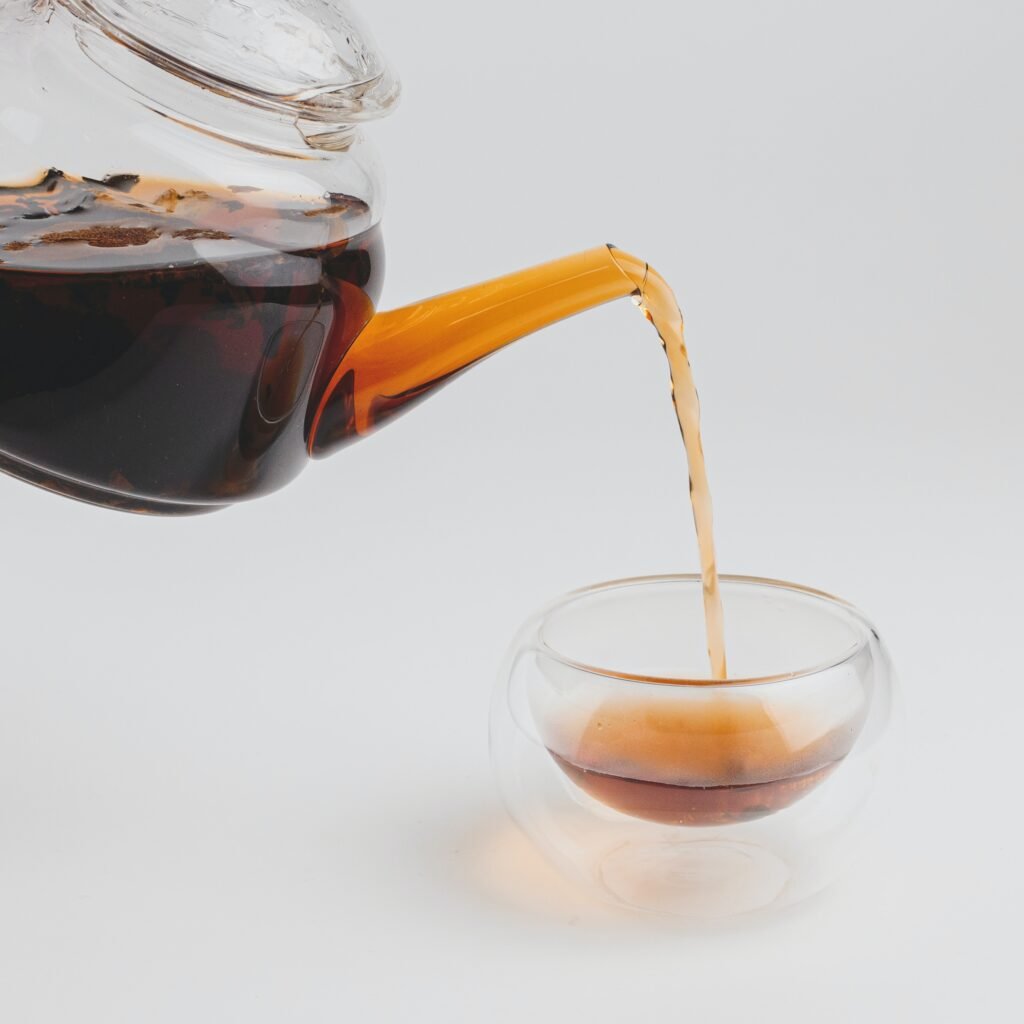Introduction
Pu-erh tea, an enigmatic gem in the world of tea, beckons us to explore its depths. Originating from the Yunnan province in China, this aged and fermented tea carries centuries of tradition and an unparalleled flavor profile. Join us on a journey as we unravel the mystique of Pu-erh tea, delving into its history, types, health benefits, and the art of brewing this unique elixir. The Mystique of Pu-erh Tea: A Journey Through Flavor and Tradition

The Roots of Pu-erh
1. Historical Origins
Pu-erh tea traces its roots back to ancient China, where it was initially produced for medicinal purposes. Over time, it evolved into a cherished beverage, known for its earthy and complex flavors.
2. Yunnan Province
The Yunnan province, often referred to as the “birthplace of tea,” is renowned for its lush tea gardens and is where Pu-erh tea production is centered.
The Unique Types of Pu-erh
1. Raw Pu-erh (Sheng)
Raw Pu-erh is characterized by its vibrant green color and a crisp, astringent taste. It’s known for aging gracefully over time, developing richer flavors and aromas.
2. Ripe Pu-erh (Shou)
Ripe Pu-erh, also known as “cooked” or “fermented” Pu-erh, undergoes a post-fermentation process. It has a deep, dark color and boasts a mellow and earthy flavor profile.
The Health Benefits
1. Digestive Aid
Pu-erh tea is cherished for its digestive properties, aiding in digestion after meals and promoting gut health.
2. Weight Management
Some studies suggest that Pu-erh may assist in weight management by boosting metabolism and aiding in fat breakdown.
3. Antioxidant Richness
Like other teas, Pu-erh is rich in antioxidants that combat free radicals, potentially reducing the risk of chronic diseases.
The Art of Brewing Pu-erh
Making pu-erh tea is an art in itself. Here’s how to get the most from your Pu-erh leaves:
- Ingredients: Pu-erh Chai leaves, fresh water (around 212°F or 100°C), a teapot or gaiwan, and a teacup.
- Measure: Use approximately 1 teaspoon of Pu-erh Chai leaves per 8 ounces of water.
- Rinse: Pour hot water over the leaves to rinse them briefly, then discard the water.
- Brew Time: Steep for about 2-3 minutes for raw Pu-erh and 3-5 minutes for ripe Pu-erh.
- Enjoy: Sip slowly and savor the evolving flavors of each infusion.
The Allure of Aging
One of the most fascinating aspects of Pu-erh Chai is its ability to age like fine wine. Many enthusiasts collect and store Pu-erh cakes or bricks, allowing them to mature and develop deeper, more complex flavors over time.
Conclusion
Pu-erh Chai, with its rich history, diverse types, and potential health benefits, offers a captivating journey for tea connoisseurs. Whether you’re seeking a soothing cup after a meal or embarking on the art of aging Pu-erh, this tea invites you to experience its mystique.
FAQs
1. Does Pu-erh Chai contain caffeine?
- Yes, pu-erh Chai does contain caffeine, but the level can vary depending on the type and age of the tea.
2. How long can Pu-erh Chai be aged?
- Pu-erh Chai can be aged for several decades or even centuries, enhancing its value and Pu-erh Chai complexity.
3. Can I brew Pu-erh Chai multiple times?
- Absolutely! Pu-erh Chai is known for its ability to be re-steeped, with each infusion revealing different flavors.
4. Where can I purchase authentic Pu-erh Chai?
- Look for reputable tea shops or online retailers specializing in high-quality Pu-erh teas.
5. What is the best way to store Pu-erh Chai for aging?
- Store Pu-erh in a cool, dark, and well-ventilated place, away from strong odors to allow it to age gracefully.
Contact Details:- 9499347308



